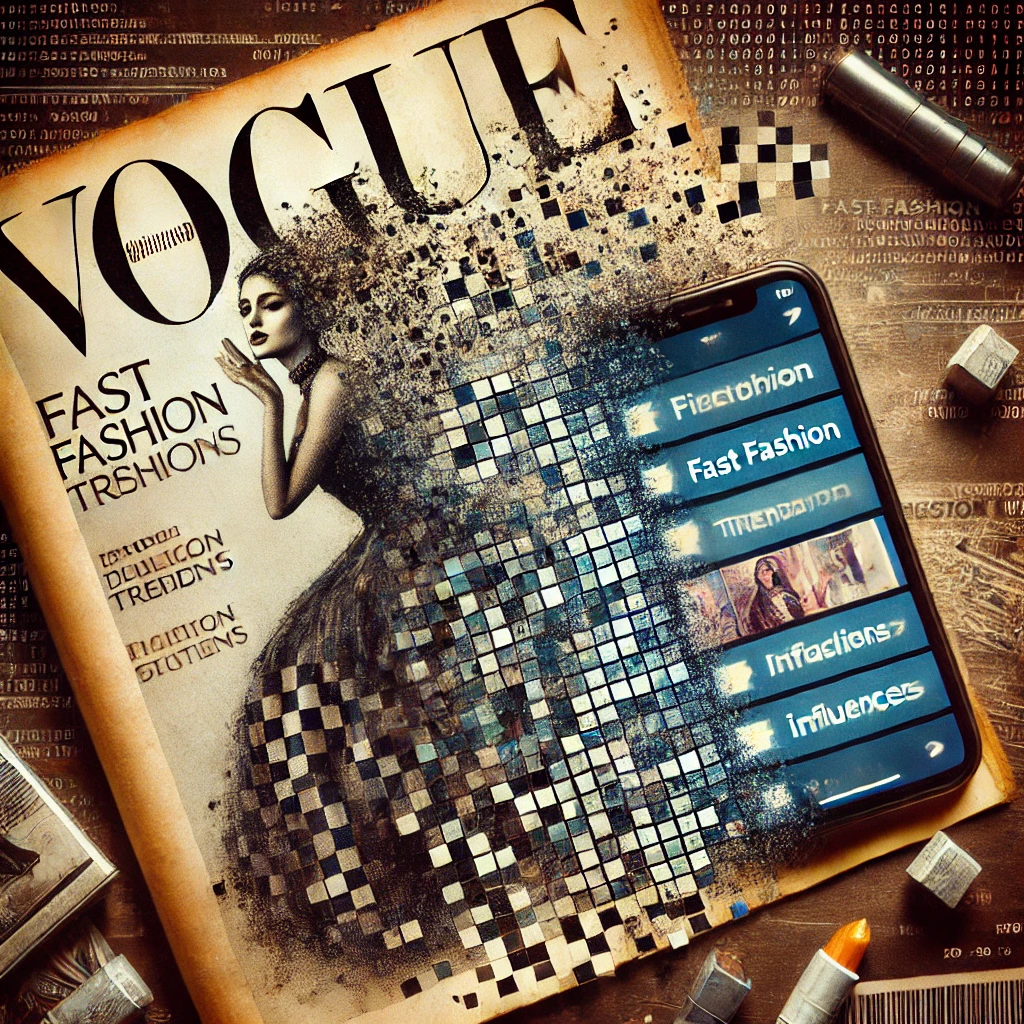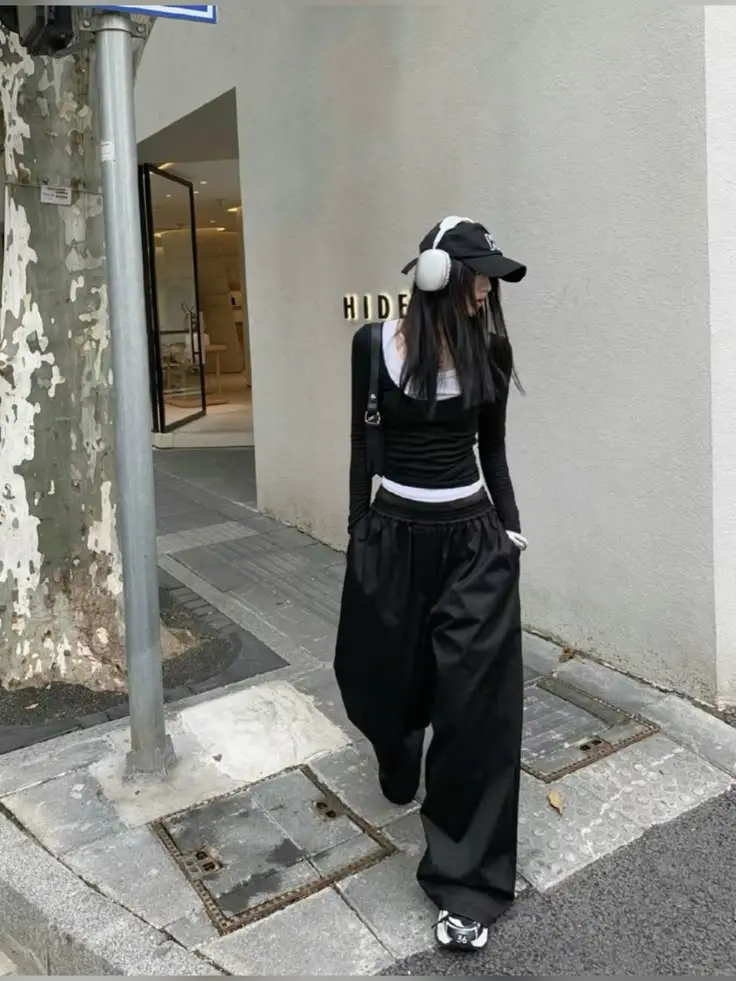How writing for interactive media can differ from platform to platform.
When posting on social media, how would you describe the way you caption your posts or talk to your audiences? Is it conversation-like? Serious? This may also depend on the social media platform you use. To give examples, I drafted three posts on three different social media platforms: LinkedIn, Instagram, and TikTok. The writing styles for these platforms are very different, as one platform may require you to engage audiences much quicker than others. All in all, it is important to understand these differences in writing styles for different platforms, to help audiences engage in your content and enjoy it across platforms.
The content I chose to share across platforms is my long form article, titled “Digital Media is Killing the Traditional Fashion Industry”. In the article, I discuss how digital media has led to many declines in the fashion industry; from the decline of print publications to fashion-related careers, and how the print industry struggles to keep up with digital media.
Writing for LinkedIn
LinkedIn, a much more professional-like platform, aims to promote leadership and help professional individuals connect with one another. With that being said, promoting special projects or long works would be perfect for this platform. When explaining writing for different social media platforms, Anastasia at SocialBee encourages readers to “use LinkedIn to spread your knowledge. Whether through a text post or by linking to articles from your blog, this can help position you as an authority in your niche” (2024). When writing on LinkedIn, I’ve come to realize how conversational the platform is, despite its professional reputation. As a result, a lot of emoticons and hashtags are used to promote the work towards the end of the post, and help the post reach the right audiences.
As an example, here is a post I wrote on LinkedIn promoting my work. While the link to the article itself is not visible, I did link it to the post using LinkedIn’s link feature. To the left is the image I attached to the post, and the right is what I wrote:


As you can see, posting on LinkedIn can be much more conversational, like you are pitching the article to someone in the industry. Though it is important to not get too conversational, as overly casual tones may not be taken seriously on LinkedIn. When writing the post, I pretty much felt like I was writing a blog post. The audience I aimed for were individuals in the fashion magazine industry, as this is a career I am aiming for in the future. When selecting my content, I chose the same image I used for my article. I really liked how this image captured the main point of my article, and fits pretty well with the post itself.
Writing for Instagram
When writing for Instagram, it is entirely up to the author how conversational the post should be. Instagram is known for its many “sides” of the platform – comedy, business, personal, and more. I realized it was important to share my article on this platform, as Instagram is heavily used in the fashion world. When creating a post for Instagram, I decided to create a collage for the post itself, as Instagram is a very creative platform.
To the left is the image I made and posted, and to the right is my caption for the post:


As Instagram is known as more of a creative outlet, I decided to get a bit more creative in my post. I put together a collage of various fashion influencers, and mixed in some magazine covers. In the middle, I put “the fashion industry is dying. thanks social media.” to give a main message to my article, and lure readers to my work. After giving a main summary, I informed readers that the article will be linked in my bio, where they can find on my account page. In the same article mentioned previously by SocialBee, Anastasia mentioned how writing for Instagram can include all types of interactive content, like tagging or using Instagram Stories. Using Instagram Stories can also help my content reach newer audiences, by incorporating polls, questions, or quizzes to encourage readers to view and interact with my content.
Writing for TikTok
Writing for TikTok can be much more challenging. TikTok is known and loved for their short form content, where users can enjoy copious amounts of information dialed down into 15-30 seconds. In turn, this has destroyed our attention spans. According to SG Analytics, in 2023 our attention span has reduced to only eight seconds. As a result, businesses are learning to adapt and create new business models because of this. Ultimately, writing for TikTok means capturing audiences as soon as you can. This would have to be through the content itself, as viewers’ eyes don’t tend to go towards the caption until after viewing the content. For more informational content, you would have to get really creative to capture your viewers.
Here’s what I wrote for TikTok:

I unfortunately could not include the content itself, but I would’ve posted multiple images for viewers to scroll through, starting at vintage magazines then transitioning to influencer-made fashion. In the last image, I would ask which was their favorite, gathering opinions in the comments. I used the title feature to hopefully grab readers’ attention for the caption, using a pretty dramatic caption. Then, in the smaller caption, I would inform readers of various facts surrounding the decline in the print industry and of my writing. I also used multiple popular hashtags on the fashion side of TikTok, to hopefully get the content on everyone’s algorithm.
Normally, lowercase letters are a big no in writing. There has, however, been a huge trend recently with using lowercase letters everywhere (which I have ultimately fallen victim for). I believe using lowercase letters can ultimately help me reach more audiences, as it seems a bit personal and stands out from other informational content. When writing for social media and short-form content, it is important to stand out and capture viewers in your writing. In just eight seconds or even shorter, viewers can easily skip to the next video.
Conclusion
Learning how to write for different social media platforms can be crucial to finding your right audiences. Understanding the specific tones that should be used for different platforms can help readers take your content seriously. Writing on TikTok, for example, is very different from writing on LinkedIn – TikTok is much less serious, more conversational, and many times comedic. Promoting professional work, no matter the platform, doesn’t have to be difficult. Understanding the platforms being used are crucial in knowing how or what to write, as platforms and the average attention spans tend to vary. Overall, as digital media continues to rise, being able to write for different social media platforms is crucial in successfully promoting any projects, and can be a very crucial skill to have.
Works Cited:
Anastasia. (2024, May). Social Media for Writers: Best Platforms and Strategies. SocialBee. https://socialbee.com/blog/social-media-for-writers/#linkedin-for-writers
SG Analytics. (2023, August 11). TikTok Scrolling Has Shortened the Attention Span of Students: How Can EdTech Help Solve the Crisis? Www.sganalytics.com. https://www.sganalytics.com/blog/tiktok-scrolling-has-shortened-the-attention-span-of-students-how-can-edtech-help-solve-the-crisis/




